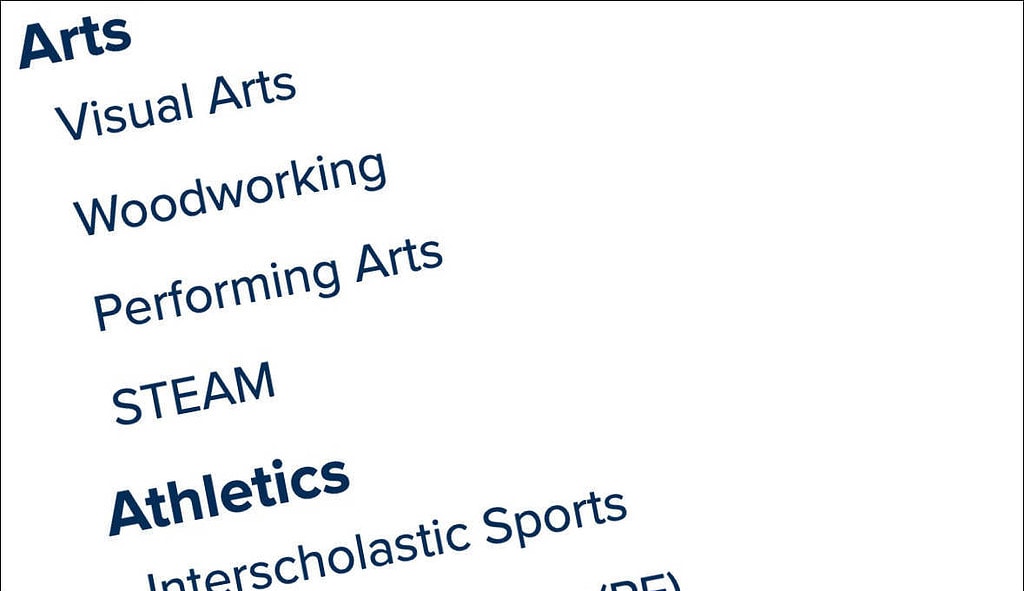What Should a School Sitemap Include and What Should be Removed?
A school's website serves as a vital gateway to information for prospective students, parents, faculty, and the community. An intelligently structured and easily navigable website is pivotal in conveying a school's identity, offerings, and values effectively. A crucial component of website organization is the sitemap, a hierarchical list of pages that aids users in understanding the site's structure. However, creating an optimal school website sitemap requires careful consideration of what to include and, equally importantly, what to exclude. Let's delve into this critical aspect of website development to understand how to design an efficient and user-friendly sitemap.
Understanding the Significance of a School Website Sitemap
A sitemap acts as a blueprint for a website's architecture, influencing its usability and navigation. Its primary purpose is to enhance the user experience by providing a clear and organized structure, enabling visitors to find relevant information effortlessly. For independent schools, this tool plays a pivotal role in presenting a comprehensive view of the institution, catering to various stakeholders like prospective students, current students, parents, alumni, and faculty members.
What Should a School Sitemap Include?
Homepage:
- Introduction to the school's mission, vision, and core values.
- Quick links or access points to essential sections of the website.
- News and events updates.
- Contact information and social media links.
About Us:
- History and background of the school.
- Leadership team profiles.
- Accreditation and affiliations.
- Testimonials or success stories.
Admissions:
- Application procedures and requirements.
- Virtual tours or campus visit information.
- Tuition fees and financial aid details.
- FAQ section for common admission queries.
Academics:
- Overview of academic programs offered.
- Curriculum details and extracurricular activities.
- Faculty profiles and teaching methodologies.
- Academic calendar and schedule.
Student Life:
- Clubs, organizations, and student activities.
- Facilities and campus resources.
- Student testimonials or blog posts.
- Health and wellness initiatives.
News & Events:
- Upcoming events and calendar.
- News articles and press releases.
- Newsletters or school publications.
Alumni Relations:
- Alumni success stories.
- Information on alumni events and reunions.
- Opportunities for alumni engagement or support.
Contact Us:
- Contact information for various departments.
- Inquiry forms or contact submission options.
- Frequently asked questions (FAQs).

What Should Be Removed from the Sitemap?
Outdated or Redundant Pages: Eliminate pages that are no longer relevant or duplicate information available elsewhere on the site.
Excessive Sub-Menus: Simplify navigation by minimizing the number of sub-menus within categories. Too many levels of navigation can confuse users.
Irrelevant Content: Remove content that doesn't align with the school's current vision, mission, or goals.
Broken Links or Error Pages: Regularly review and remove broken links to maintain a seamless user experience.
Jargon or Complex Language: Simplify content to make it more accessible and understandable, especially for new visitors or prospective families.
Best Practices for Creating an Effective Sitemap
User-Centric Approach: Prioritize the needs of the website visitors when designing the sitemap. Ensure intuitive navigation and easy access to essential information.
Regular Updates and Maintenance: Conduct periodic reviews and updates to keep the sitemap and website content current and relevant.
Mobile Responsiveness: Optimize the sitemap for mobile devices to cater to users accessing the site through smartphones or tablets.
SEO Optimization: Structure the sitemap to enhance search engine visibility by using descriptive and relevant keywords.
Feedback and Testing: Gather feedback from various stakeholders, and perform usability testing to identify any usability issues and improve the sitemap's effectiveness.
Conclusion
A well-organized sitemap is a cornerstone of an efficient and user-friendly school website. By including essential sections and removing redundant or outdated content, independent schools can create an intuitive navigation experience for their website visitors. Evaluation and refinement of the sitemap ensures that it remains aligned with the school's objectives while meeting the needs of its audience. Ultimately, a thoughtfully designed sitemap contributes significantly to showcasing a school's identity, fostering engagement, and effectively communicating its offerings.